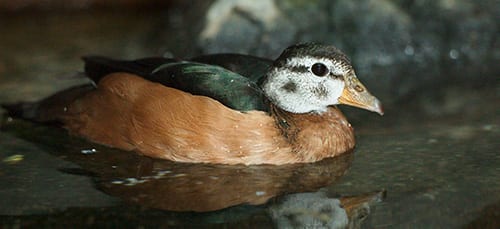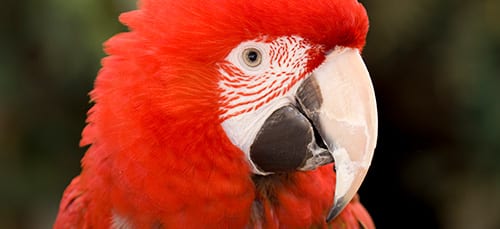Where They Hang Out
At the zoo: in Bird World
In the wild: wooded areas of small islands in Southeast Asia and the Pacific
Favorite Foods
At the zoo: fruit, crickets, specially formulated bird food
In the wild: seeds, berries, nuts, fruits and insects
Social Life
These pigeons have been observed alone and in groups of up to 30 birds. Nicobar pigeons are monogamous and typically mat for life.
About Skeletor
Caloenas nicobarica
Introducing feathered friend, Skeletor a Nicobar pigeon, or Caloenas nicobarica. Nicobar pigeons are a large and beautiful pigeon that is fairly common in zoological parks. These pigeons have feathers that are iridescent, predominantly dark green with a copper sheen. While they seem rather drab when seen in the shade, in the sunlight their feathers look very brightly colored. There are long neck feathers, called hackles, which give the birds a “dreadlock“ look.
In the wild, Nicobars are island specialists. They can be found on Adaman and Nicobar Islands in India, Myanmar, Thailand, Malaysia, Cambodia, Vietnam, Indonesia, Papua New Guinea, Palau and the Soloman Islands. They nest on wooded islets in dense colonies. Predators such as cats and rats have been introduced as the islands have been developed and take advantage of the close nesting sites to prey on eggs, chicks and even adult Nicobars. This species of pigeon are classified as Near Threatened according to IUCN red list due to hunting, loss of habitat and the illegal pet trade. Another reason for their population decline is that the offshore islets they use for nesting are being polluted by industry and logged for plantation development. The Nicobar pigeons, like Skeletor, are an excellent ambassador for pigeon and dove species.
Nicobar pigeons are a unique bird species. One reason is that both parents feed the chick “crop milk” composed of cells from the parent’s crop, or neck pouch. Another reason is that the Nicobar pigeon is the closest living relative of the Dodo bird.
To celebrate Feathered Friend February, come visit all six Nicobar pigeons in the Rainforest room of Bird World. You might find Skeletor in his likely places behind the bench in the trees or on his bathing rock in the splash of the waterfall. He has a blue colored band on his left leg.

